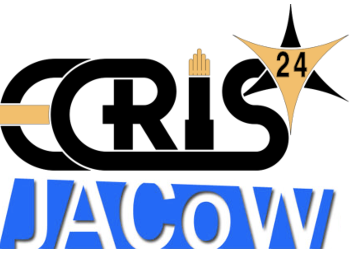The simulation of the ion extraction from the Electron Cyclotron Resonance Ion Sources (ECRISs) is necessary for the optimization and development of the performance of ion sources.
Due to the magnetic field configuration of the ECRISs the calculations need to be performed in 3D.
Therefore simulation programs based i.e. on C⁺⁺ libraries like IBSimu were developed. In this work a physical...
Since the powerful capability of producing high charge state ions for heavy ions and the long lifetime of the ECR ion source is deemed one of the most robust ion source types. So far, the 3rd generation ECR built with NbTi superconductor has a wonderful performance reference to the ECR used by LBNL and IMPCAS for a long time. However, this type of ECR has not got a well spread and further...
The Ion Source Group has undertaken a R&D project of a compact low energy injector. The project is the development of an intense proton source and low energy beam (LEBT) for a transportable neutron source. The specific characteristics of the injector are low power consumption, compact and low beam emittance. An electrostatic low energy beam transport with a double Einzel-Lens setup is used to...
RAON (Rare isotope Accelerator complex for ON-line experiments) is a heavy ion accelerator under construction in Daejeon, South Korea. RAON plans to operate a 28 GHz Electron Cyclotron Resonance Ion Source (ECRIS) with a fully superconducting magnet and is currently operating a 14.5 GHz ECR ion source with a fully permanent magnet. The 14.5 GHz ECRIS was manufactured by PANTECHNIK and...
In this paper we analyze the behavior of a low beam current proton ECR ion source for linac. During the operation of the source, as a function of the operating parameters we have observed a complex behavior. The state of the plasma is highly dependent on the input parameters, and in some cases even bi-stable conditions can be achieved showing abrupt changes in the state. To try to understand...
This study investigates an efficient injection of high-intensity light ions from an Electron Cyclotron Resonance (ECR) ion source into a Radio Frequency Quadrupole (RFQ) accelerator. An often-adopted solution for the beam matching between an ion source and an RFQ is to apply two solenoids as a Low Energy Beam Transport (LEBT) section. There are also other solutions which skip the LEBT section...
Microwave discharge ion sources (MDIS) and electron cyclotron resonance ion sources (ECRIS) are widely used to feed particle accelerators. Their magnetic field consists in an axis-symmetric magnetic field that can be produced by permanent magnets or coils with the aim of assuring plasma heating by electron cyclotron resonance and confining the plasma axially. In ECRIS, a sextupole is added for...
NQSTI (National Quantum Science and Technology Institute) is the enlarged partnership on QST established under the National Recovery and Resilience Plan (NRRP) funded by the European Union – NextGenerationEU. In this framework, there is a growing interest in the availability of mA beams of singly charged (1+) metallic ions to realise quantum devices. To satisfy this request, the joint INFN...
An all-permanent magnet electron cyclotron resonance ion source-LAPECR3 (Lanzhou All Permanent magnet Electron Cyclotron Resonance ion source No.3) had been developed as the C⁵⁺ ion beam injector of Heavy Ion Medical Machine (HIMM) accelerator facility since 2009 in China. The first HIMM demo facility was built in Wuwei city in 2015, which had been officially licensed to treat patients in...
The GTS-LHC electron cyclotron resonance (ECR) ion source is an integral part of the chain of accelerators at CERN. It produces the heavy ion beams which are accelerated using a series of accelerators from LINAC up to the LHC. The ion beams are extracted from an ECR plasma generated at the GTS-LHC ion source, however, there has not yet been a non-invasive diagnostic device to study the plasma....
The Heidelberg Ion Beam Therapy Center (HIT) is a hospital-based treatment facility in Germany. Since the first treatments in 2009, more than 8.500 patients have been irradiated with protons or carbon ions and since July 2021 with helium ions. At HIT, three Supernanogan ion sources supplied by Pantechnik are in operation around the clock for therapy up to 335 days a year.
A 4th Supernanogan...
In the scope of high current protons sources simulations, we tried to simulate the plasma chamber of the SILHI proton source with HFSS. This work focuses on the RF and multipactor simulation close to the boron nitride window.
In the scope of high current protons sources characterization, the CEA is working on a 4D-emittancemeter based on the pepperpot technology. After some unsuccessful developments with phosphorous scintillators, we decided to test micro-channel plates (MCP) for measurements of proton beams at very low energy (typically between 50 and 100 keV). MCP are supposed to resist to proton beams at very...
A 48.5 MHz RFQ has been designed to transport and accelerate ²³⁸U⁴⁰⁺ (0.52 emA) and ²⁰⁹Bi³⁰⁺ (1.047 emA) beams extracted from a high performance ECR ion source. The RFQ design comprises of a pre-buncher built into the vanes to narrow the transmitted charge state distribution as much as possible. The design parameters as a function of cell length is optimised on ²⁰⁹Bi³⁰⁺. It is shown that the...
During first operation of SILHI in 1995 at CEA Saclay, a velocity filter diagnostic (Wien Filter) was installed on the LEBT, analyzing the 100 mA of protons at 95 keV. The device was used many years providing beam proportion measurements on the beam axis. Unfortunately, it was damaged while handling and was no longer working as intended. This paper describes the maintenance and upgrade of the...

